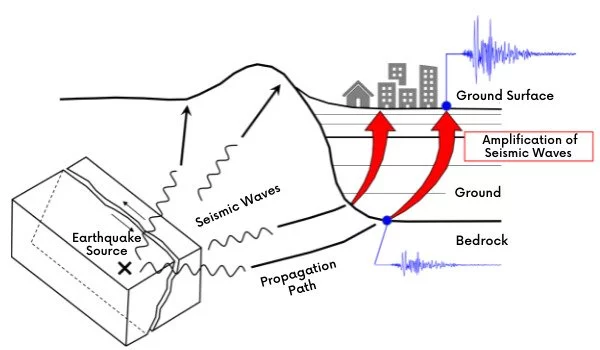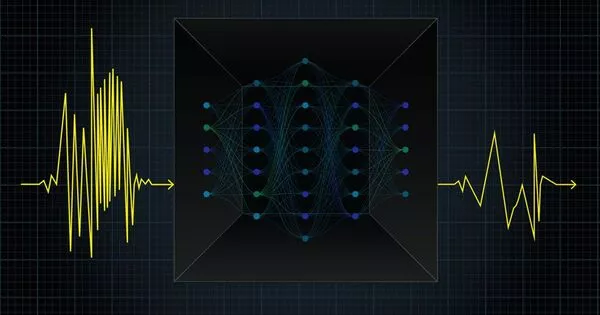The movement beneath the earth’s surface causes an earthquake. The vibration of rocks and the sudden release of energy in the earth’s interior cause it. Seismic waves are created when two tectonic plates slip past each other and pressure begins to build up at the edges.
Seismic ground motion predictions are an important part of early warning systems and seismic hazard mapping in disaster mitigation planning for future large earthquakes. The ground’s movement is determined by how the soil layers amplify seismic waves (described in a mathematical site “amplification factor”). Geophysical explorations to understand soil conditions, on the other hand, are expensive, limiting the characterization of site amplification factors to date.
A new study published in the Bulletin of the Seismological Society of America by Hiroshima University researchers introduced a novel artificial intelligence (AI)-based technique for estimating site amplification factors from data on ambient vibrations or microtremors of the ground.
The proposed method would contribute to more accurate and more detailed seismic ground motion predictions for future earthquakes. The study investigated the relationship between microtremor data and site amplification factors using a deep neural network with the goal of developing a model that could be applied at any site worldwide.
Associate professor Hiroyuki Miura
The subsurface soil conditions that determine how earthquakes affect a site vary greatly. Softer soils, for example, tend to amplify earthquake ground motion, whereas harder substrates may dampen it. Ambient ground vibrations or microtremors, which occur all over the Earth’s surface as a result of human or atmospheric disturbances, can be used to investigate soil conditions. Measuring microtremors provides useful information about a site’s amplification factor (AF), and thus its vulnerability to earthquake damage due to its response to tremors.
The recent study from Hiroshima University researchers introduced a new way to estimate site effects from microtremor data. “The proposed method would contribute to more accurate and more detailed seismic ground motion predictions for future earthquakes,” says lead author and associate professor Hiroyuki Miura in the Graduate School of Advanced Science and Engineering. The study investigated the relationship between microtremor data and site amplification factors using a deep neural network with the goal of developing a model that could be applied at any site worldwide.
The researchers investigated a common method known as horizontal-to-vertical spectral ratios (MHVR), which is commonly used to estimate the seismic ground’s resonant frequency. It can be generated using microtremor data; ambient seismic vibrations are analyzed in three dimensions to determine the resonant frequency of sediment layers vibrating on top of bedrock. Previous research, however, has shown that MHVR cannot be used directly as the site amplification factor. As a result, the authors of this study proposed a deep neural network model for estimating site amplification factors from MHVR data.

The study used 2012-2020 microtremor data from 105 sites in the Chugoku district of western Japan. The sites are part of Japan’s national seismograph network that contains about 1700 observation stations distributed in a uniform grid at 20 km intervals across Japan. Using a generalized spectral inversion technique, which separates out the parameters of source, propagation, and site, the researchers analyzed site-specific amplifications.
Each site’s data was divided into three sets: training, validation, and test. A deep neural network was taught using the training set. The validation set was used in an iterative optimization of a model by the network to describe the relationship between microtremor MHVRs and site amplification factors. The test data were a completely unknown set that was used to evaluate the model’s performance.
On the test data, the model performed well, demonstrating its potential as a predictive tool for characterizing site amplification factors from microtremor data. However, Miura points out that “the number of training samples analyzed in this study (80) sites is still limited,” and that more research should be done before assuming that the neural network model is applicable nationwide or globally. The researchers hope to further optimize the model with a larger dataset.
Because the relationship is not always linear, rapid and cost-effective techniques are required for more accurate seismic ground motion prediction. “By applying the proposed method, site amplification factors can be automatically and accurately estimated from microtremor data observed at any site,” Miura explains. The authors of the study intend to continue refining advanced AI techniques to evaluate the nonlinear responses of the ground to earthquakes in the future.





